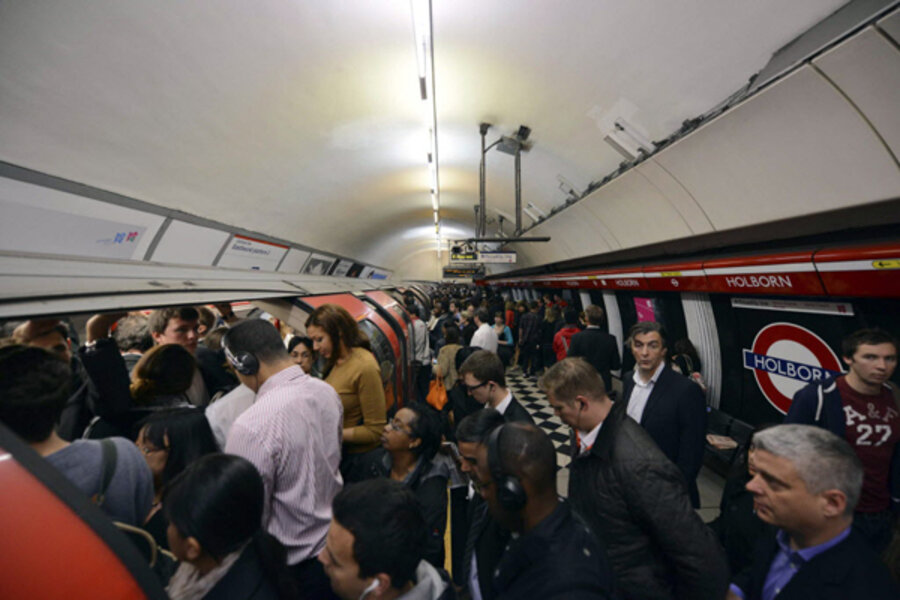Tunnel vision: London celebrates 150th birthday of its iconic 'Tube'
Loading...
| London
Blame poor ventilation, frequent delays, or simply the repeated experience of jostling up against other commuters' armpits on a crowded rush hour train – generations of users have developed a love-hate relationship with the London Underground.
Regardless of how they feel about it, however, the Tube, as the world’s oldest subterranean passenger railway is affectionately known, is turning 150 this week, a milestone that will kick off a year-long celebration.
Indeed, while the London network has been criticized in recent decades for overcrowding, a lack of development compared with other European systems, and intermittent labor conflicts, experts say that one of the world’s most famous city train networks is coping with old age relatively well.
The Tube "annihilates distance, liquidates traffic, and is the throbbing cardiovascular system of the greatest city on earth,” London’s flamboyant Mayor Boris Johnson said Wednesday. "Our massive upgrade program builds on the engineering ingenuity of our Victorian forefathers and through new signalling, trains, and track, millions of Londoners and visitors will continue to benefit from what is arguably the best, and most iconic, underground transport system in the world."
Indeed, the Tube in 2013 is a world away from Jan. 9, 1863, when a train chugged out of West London’s Paddington Station and made its way east to Farringdon in the first Tube passenger journey – one that will be recreated Sunday with a series of specially restored trains.
Today, the Underground carries more than 1 billion passengers a year on 11 lines serving 270 stations, ranging from the cavernous and modern Westminster to red-bricked Edwardian-era relics like Belsize Park.
But there have been undeniable growing pains. Most of the Underground's construction occurred between the mid-19th century and 1930, and a system that old is very expensive to maintain and expand, says Tony Travers, a local government expert at the London School of Economics, where he heads the university's London research center.
The Underground is not alone in coping with the challenges of old age. Boston's "T," the oldest subway system in the United States, began operations in 1897, with the Paris Metro (1900) and New York City subway (1904) following right on its heels. All have struggled to keep pace with urban sprawl and population expansion not planned for when they were constructed more than a century ago.
London responded to increased strain on its system with two new lines in the 1960s and '70s – Victoria and Jubilee. And Europe’s largest civil engineering project, a major rail line connecting east and west London and known as Cross Rail, is currently under way.
But the Tube's chronic congestion remains a major annoyance for both the city and its commuters. London's population has climbed briskly since its newest lines came into use – from 6.7 million in 1985 to nearly 8.5 million today.
“The Tube’s ridership is now at a higher level than at any time in history and that does lead to crowding on top of a system which, although it is more reliable than it used to be, clearly is still not as reliable as a brand new metro in Singapore or Hong Kong,” Mr. Travers said.
Also factoring into the city's public transit woes are periodic disputes between management and Underground staff represented by a muscular and fast-growing trade union, the National Union of Rail, Maritime, and Transport Workers (RMT).
This week, however, labor, crowding, and construction have taken a backseat to the Tube's birthday celebration. The Royal Mail is printing commemorative stamps in honor of the Underground, and the Royal Mint is pressing special two-pound coins. This Sunday, a restored steam engine will "reenact" one of the Tube's early rides for a select group of commuters, including the city's elated mayor.
"Happy 150th anniversary to London Underground," Mr. Johnson tweeted Wednesday, "the world's 1st and most wondrous metro system, still at the heart of everything London does."





